Living in Tennessee is a four-season delight and one of the reasons why is the gorgeous annual and perennial blooms found in its native and non-native flowers. Although some have countless hours to spend tending a garden, most of us want brilliant hues with little upkeep. While “best flowers” is somewhat subjective, the following flowers are both hardy and relatively low maintenance and will thrive in the majority of Tennessee’s growing zones (7a and 7b).
1. Stella D’Oro Daylily
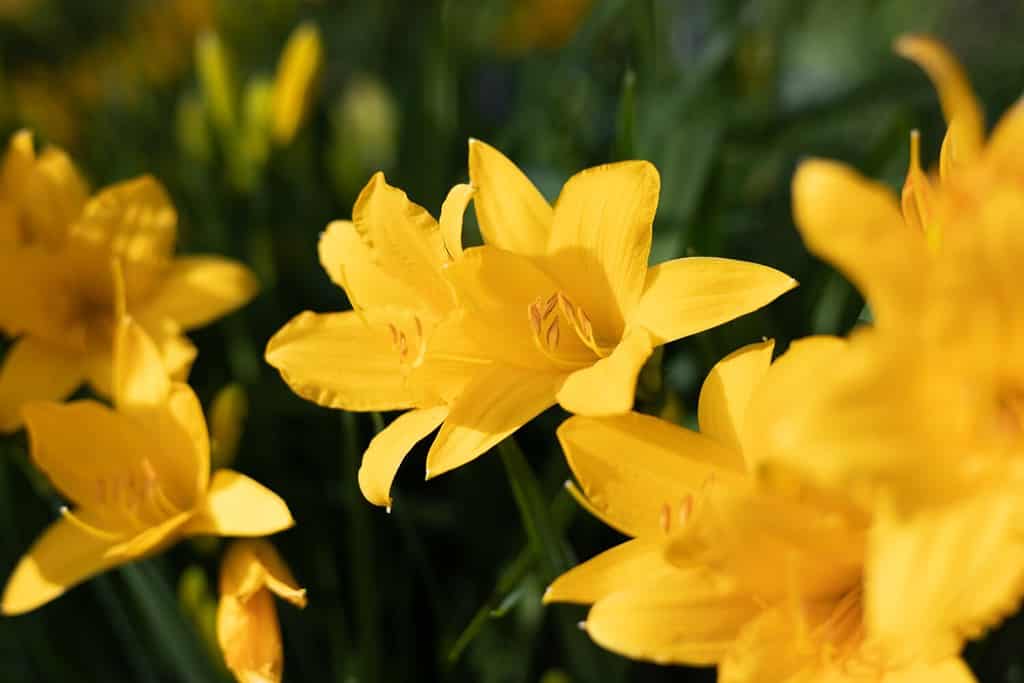
The Stella D’Oro Daylily adds vivid color to a summer landscape.
©DiandraNina/Shutterstock.com
These fragrant, yellow flowers bloom from May to August. These reblooming daylilies thrive along a walkway, in a landscape, or even on a slope that you don’t want to mow. Great pollinators, Stella D’Oro Daylilies will attract both hummingbirds and butterflies, adding to their attraction as a treasured Tennessee flower. Plant them 12 to 18 inches apart in full or partial sun after the last frost of the season.
2. Butterfly Bush
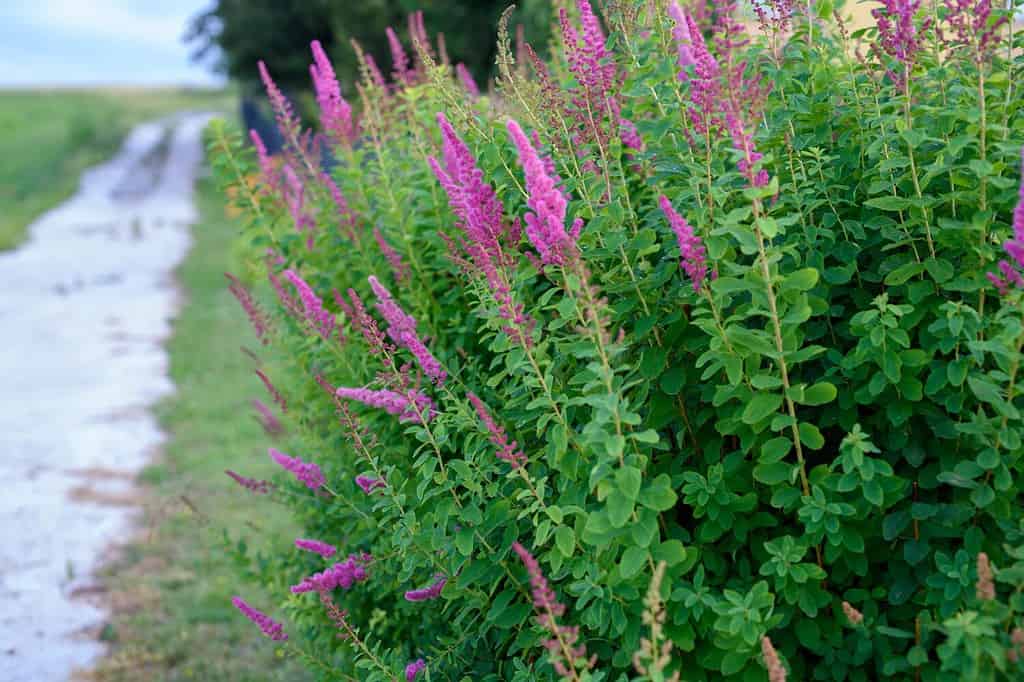
The Butterfly Bush serves as a color backdrop along a secluded path.
©M9K/Shutterstock.com
Blooming from early to mid-summer to fall, the Butterfly Bush needs full sun for optimum flowering. There are two distinct types of Butterfly Bush: the “larger” variety which grows 5 to 10 feet tall, and the “dwarf” variety, with an average height of 2 feet. Also attracting butterflies, bees, and hummingbirds, once established in your garden, the Butterfly Bush is drought tolerant and low maintenance. A colorful accent to any landscape, plant the Butterfly Bush in either spring or early fall, well before the first frost.
3. Salvia
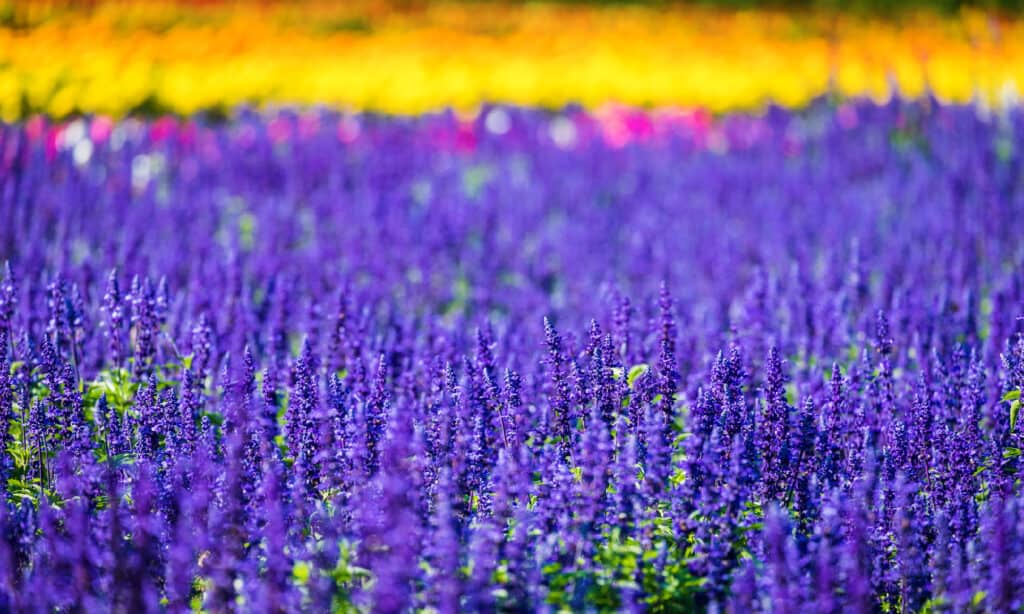
Purple salvia creates a sea of color.
©iStock.com/Biscut
The richly-hued Salvia (also known as sage) can be used in almost any part of the landscape: for mass plantings, borders, containers, and even freshly cut flowers. While several varieties of the Salvia species are available, the most common Salvia grows in either purple or red spikes juxtaposed against dark green, heart-shaped leaves. Most Salvia varieties bloom from late spring into fall, and they can also be planted in either the spring or fall, even though autumn is the more highly recommended planting time. Salvias need occasional water, but once established, these beauties are drought-tolerant in a full-sun environment.
4. Rhododendron
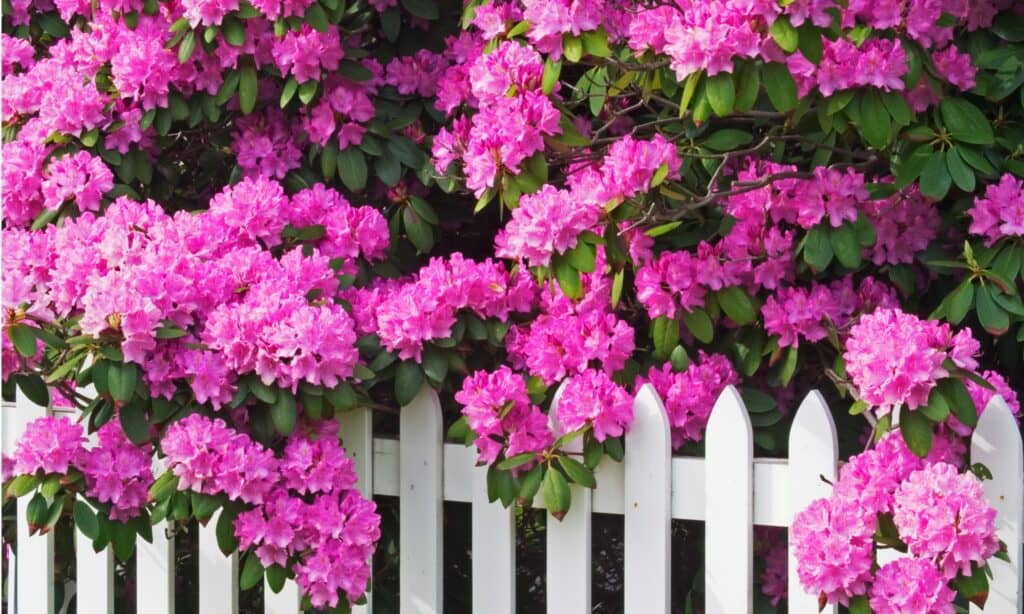
The versatility of the beloved Rhododendron adds pop to any yard or landscape.
©iStock.com/dndavis
My favorite time in late spring is when our gorgeous PJM and Rosem Elegan Rhododendrons start to bloom! Our shaded property transforms from its muted green to a sea of hot pink and lavender blooms. While several varieties of Rhododendrons grow wild in Tennessee’s higher elevations — Roan Mountain, The Cumberland Plateau, and the Great Smoky Mountains National Park — if sufficiently shaded, they can thrive in Tennessee’s lower elevations, as well.
With this breathtaking specimen comes a little extra care, in planting, placement, and shade. First of all, Rhododendrons should be planted in spring or early fall, not in the extreme heat of a Tennessee summer. As well, these special blooms require an acidic environment with a pH of 4.5 to 6. Some ways to provide this acidic soil are to use pine needles or wood chips for ground covering rather than mulch. Although Rhododendrons need sun to thrive, they also need several hours in the shade. Our Rhododendrons grow and bloom spectacularly each year with about 30% of direct sunlight per day. Blooming times depend on the variety and climate. Here in East Tennessee, our Rhododendrons usually bloom in May and June; however, in elevated regions, those blooms may pop in June, July, or even August.
5. Crape Myrtle

Raspberry-colored Crepe Myrtle shows off in full bloom.
©Noel V. Baebler/Shutterstock.com
Especially in the South, there’s no denying the Crape Myrtle’s flowering beauty. A landscape staple, Crape Myrtles should be planted in the fall when it is dormant. Because the Crape Myrtle at full maturity can grow up to 25′ in height with a wide girth, be sure to plant Crape Myrtles with plenty of space for their full-grown size. Full sun is the optimum amount for a Crape Myrtle, and though it requires water, it is somewhat drought-tolerant. Because Crape Myrtles are known to provide certain health benefits, they are a distinctive favorite for landscapes and urban planting alike.
6. Iris

A vivid Iris bursts with color.
©David R Duncan/Shutterstock.com
Tennessee flowers cannot be discussed without mentioning the mighty Iris. The Iris was designated Tennessee’s cultivated state flower in 1973, the Iris is rugged and hardy — much like the Tennessee Volunteers themselves! Reaching 2 to 3 feet tall, the Iris should be planted late summer to early fall. Although Irises usually bloom in late spring, many will flower a second time later in the summer or early fall. Irises perform best in full sun, with at least 6 hours (but optimally 8) of light. The Iris is both a feast for the senses and a nod to Tennessee’s history, making it an ideal Tennessee flower.
7. Hydrangea

BloomStruck hydrangea with purple and blue flowers adorn a well-maintained garden.
©George Cade/Shutterstock.com
Hydrangeas remain a coveted Southern flower: peruse any home decorating or gardening magazine’s website or pages to view Hydrangeas in landscapes, kitchens, and wild gardens. Hydrangeas, which thrive in morning sun and afternoon shade, should be planted in late spring (after any possible threat of frost is gone). Depending on climate, Hydrangeas bloom in late spring or early summer. In the hottest Tennesee climates, Hydrangeas may bloom twice — in the spring and then again in the fall.
8. Trumpet Vine
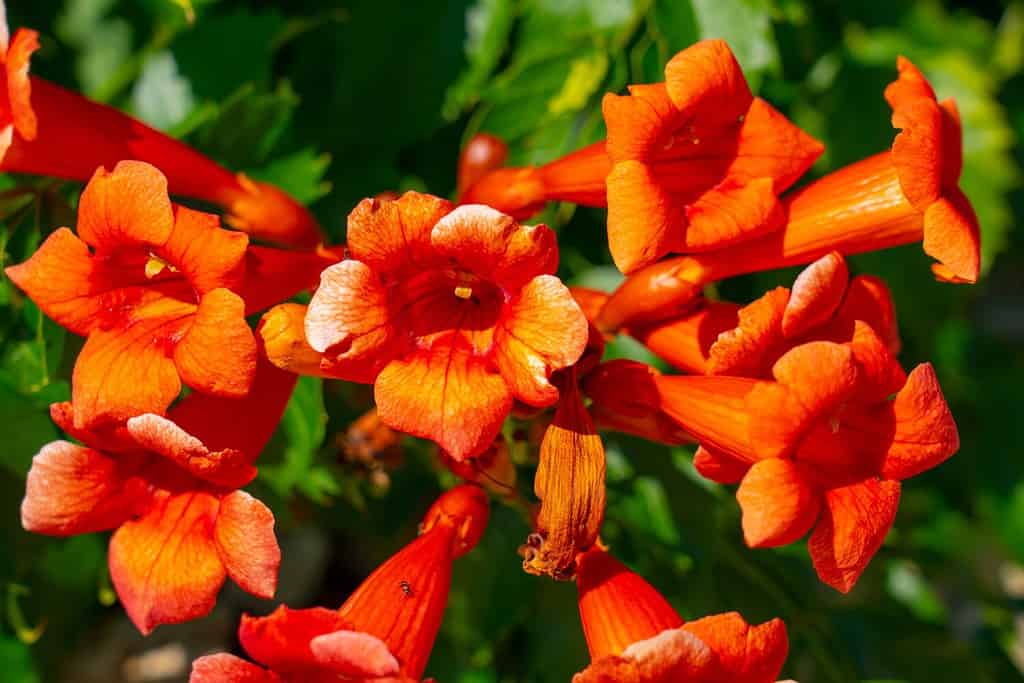
Trumpet Vines add glamour to any Tennessee landscaping bed.
©martin.dlugo/Shutterstock.com
Another pollinator favorite, the Trumpet Vine should be planted in the spring or early fall. Requiring partial to full sun, the Trumpet Vine blooms beautiful orange, yellow, and red flowers in the summer. In a moist but well-drained environment, Trumpet Vines can last for decades in all regions of Tennessee.
9. Phlox

A Creeping Phlox integrates seamlessly into a backdrop of greenery and stone.
©speakingtomato/Shutterstock.com
A perennial groundcover, Phlox makes for a useful and interesting choice in East Tennessee gardens. Phlox requires partial to full sun, depending on the variety selected. You can plant Phlox after the last and before the first frost, so be sure to double-check those dates as you begin to plant. These fragrant favorites bloom from July to September, and based on my experience, you won’t regret choosing them!
10. Indian Blanket
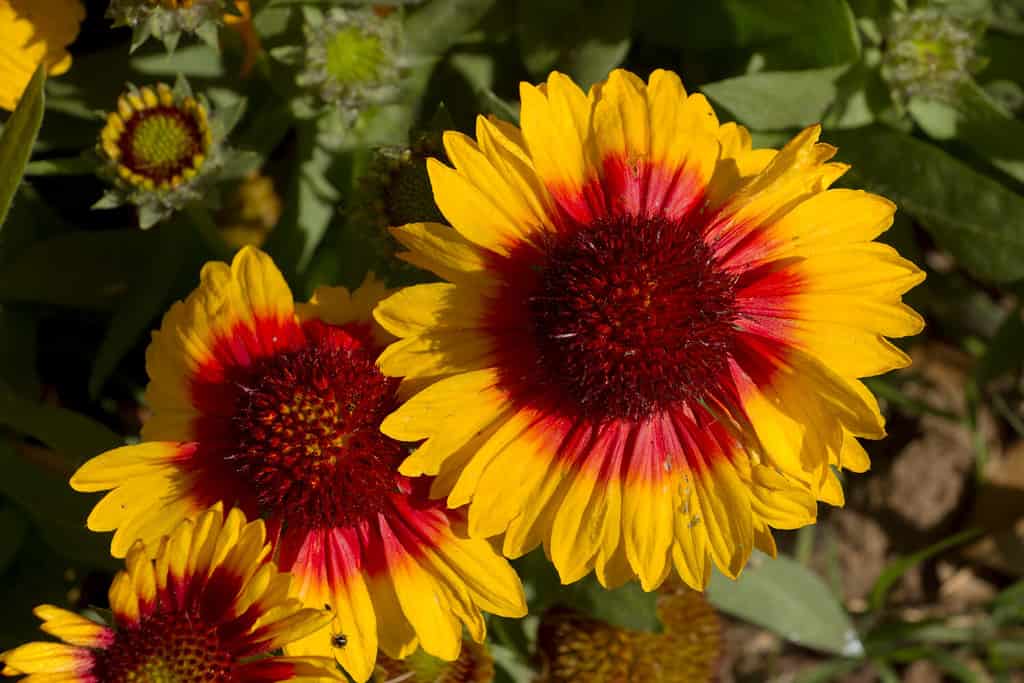
The distinct colors of the Indian Blanket scream Tennessee summer.
©Nick Greaves/Shutterstock.com
With its bright red centers and yellow accents, Indian Blanket flowers provide a unique shape and color concept in a Tennessee flower choice. Indian Blanket seeds can be planted in late fall or very early spring, giving an option based on your time and garden planning. Requiring full sun, Indian Blankets bloom throughout the summer, allowing observers to enjoy this treasure for a longer period of time.
11. Pansy

Pansies are a hardy and long-lasting choice for a Tennessee flower.
©Nitr/Shutterstock.com
While they get a bad rap from their connotation, Pansies can — ironically — bloom for most of the year without requiring any extra care. Plant pansies during the cool days of spring or fall, and again, early morning sun and afternoon shade are best for optimum blooms and growth. Often used as a potted plant, Pansies demonstrate a variety of colors for little effort.
12. Eastern Redbud
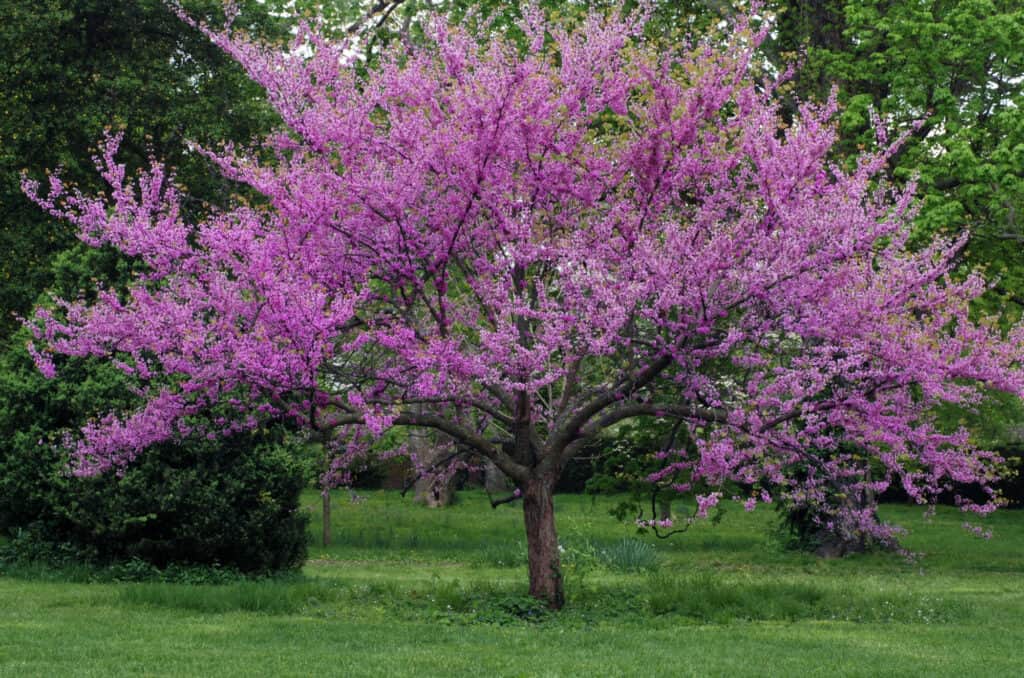
Eastern redbud trees reach up to 30 feet high.
©Marie C Fields/Shutterstock.com
A harbinger of spring in Tennessee, Redbuds bloom from March to early April, the beginning of the spring flowering season. That’s why the first “cold spell” in Tennessee is referred to as “Redbud Winter.” Eastern Redbuds flourish in partial shade to full sun, and they should be planted in early spring after the danger of frost has passed. Blooming between March and April, the Eastern Redbud’s glory is brief, blooming for only 2 to 3 weeks. However, they are a Tennessee flowering plant staple and a sign of sunny days and warm nights to come.
With distinct and discreet changing seasons, Tennessee offers a cornucopia of flowers to plant. Even better, Tennessee flowers provide not only beautiful aesthetics, they also reflect the individuality of the individuals who intentionally choose them.
| Flower | Season for Planting | Sun Required |
|---|---|---|
| Stella D’Oro Daylily | After the last frost | Full/partial |
| Butterfly Bush | Spring/early fall | Full |
| Salvia | Spring/fall | Full |
| Rhododendron | Spring/early fall | Shade and sun |
| Crape Myrtle | Fall | Full |
| Iris | Late summer/early fall | Full |
| Hydrangea | Late spring | Shade and sun |
| Trumpet Vine | Spring/early fall | Partial to full |
| Phlox | After/before frost | Partial to full |
| Indian Blanket | Late fall/early spring | Full |
| Pansy | Spring/fall | Shade and sun |
| Eastern Redbud | After the last frost | Shade and sun |
The photo featured at the top of this post is © iStock.com/Wirestock
Thank you for reading! Have some feedback for us? Contact the AZ Animals editorial team.







